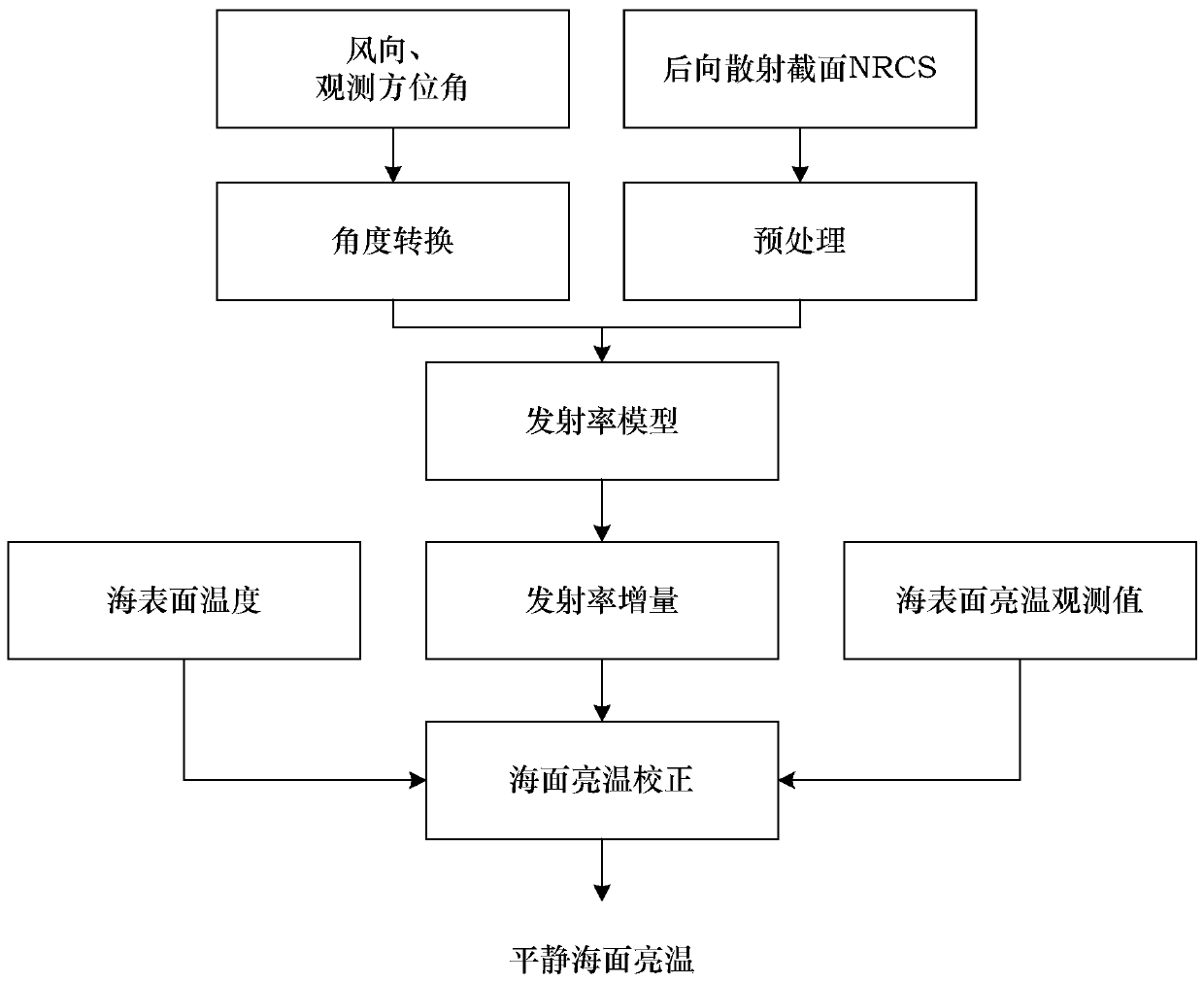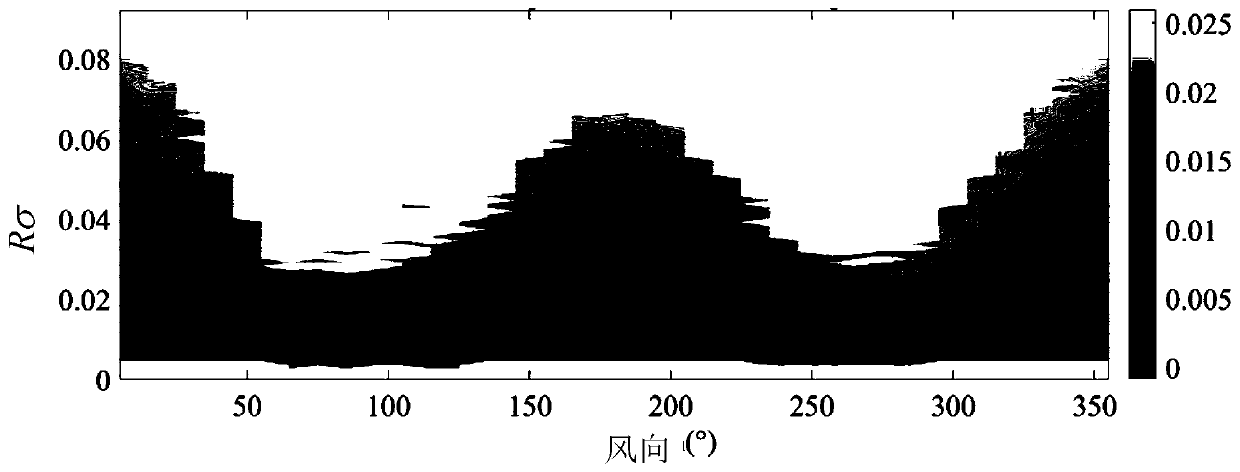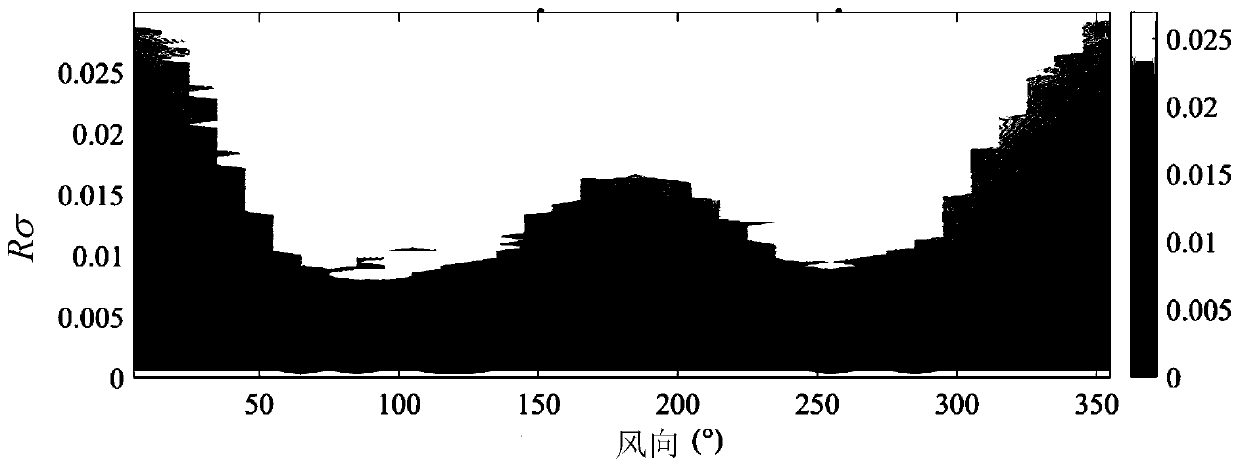Method for correcting brightness temperature of rough sea surface by using backscatter cross section
A backscattering cross-section and rough sea surface technology, applied in the field of sea surface salinity inversion, can solve the problems of cumbersome steps and model errors, and achieve the effect of simple model, reduced model error and fast calculation speed
- Summary
- Abstract
- Description
- Claims
- Application Information
AI Technical Summary
Problems solved by technology
Method used
Image
Examples
Embodiment 1
[0102] The data from September 2015 to March 2016 were used to establish and validate the model. The data from September to December 2015 were used for method establishment, and the data from January to March 2016 were used for method validation. Data affected by rainfall, land, sea ice, etc. have been removed from the data. The data used for method establishment is greater than 1.2 million pairs per incident angle, and the data used for method validation is greater than 900,000 pairs per incident angle.
[0103] Figure 2A , Figure 2B , Figure 2C and Figure 2D It shows the change of the mean emissivity increment value of beam3's rough sea surface calculated by using training data with Rσ and wind direction. It can be seen that the emissivity increment of rough sea surface has a high correlation with Rσ and wind direction, and the emissivity increase The amount increases with the increase of Rσ, and changes in a cosine manner with the wind direction, so the model proposed...
PUM
 Login to View More
Login to View More Abstract
Description
Claims
Application Information
 Login to View More
Login to View More - R&D
- Intellectual Property
- Life Sciences
- Materials
- Tech Scout
- Unparalleled Data Quality
- Higher Quality Content
- 60% Fewer Hallucinations
Browse by: Latest US Patents, China's latest patents, Technical Efficacy Thesaurus, Application Domain, Technology Topic, Popular Technical Reports.
© 2025 PatSnap. All rights reserved.Legal|Privacy policy|Modern Slavery Act Transparency Statement|Sitemap|About US| Contact US: help@patsnap.com



